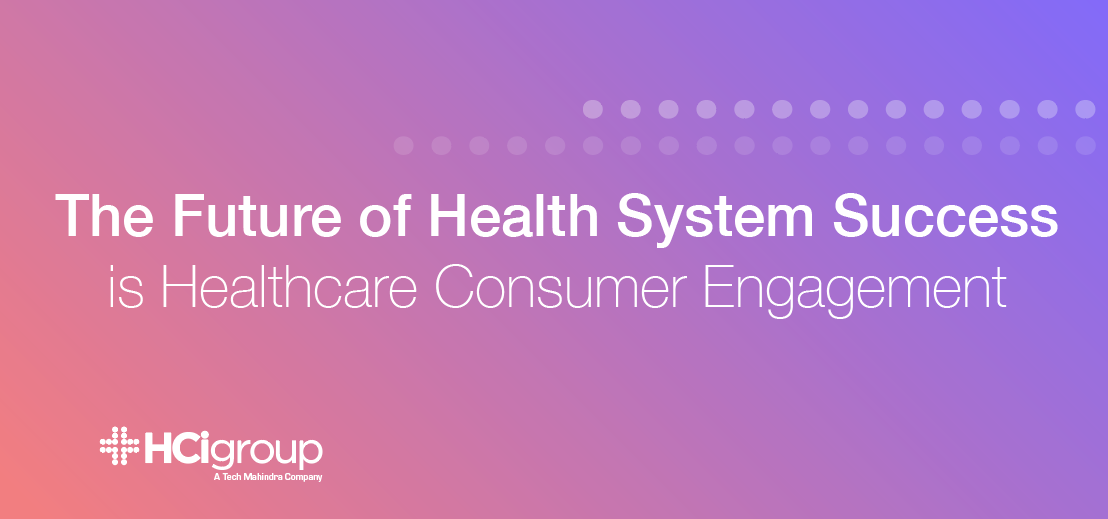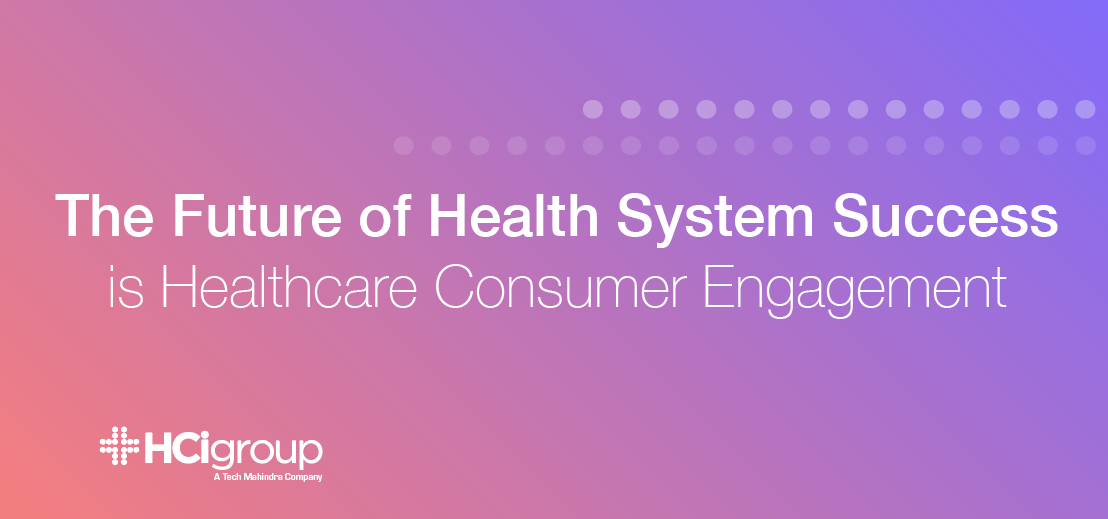The Future of Health System Success Is Healthcare Consumer Engagement

 The thought of patients as consumers is concept that can make even the most seasoned health system administrator cringe. But it’s a vital mindset shift that must be adopted across the spectrum of healthcare professionals if there is any hope for a system to thrive. Simply put: if the patient is not perceived as in control of their healthcare choices -- and the revenue that follows them -- then a gross miscalculation of focus will lead to the demise of even the most state-of-the-art healthcare organizations.
The thought of patients as consumers is concept that can make even the most seasoned health system administrator cringe. But it’s a vital mindset shift that must be adopted across the spectrum of healthcare professionals if there is any hope for a system to thrive. Simply put: if the patient is not perceived as in control of their healthcare choices -- and the revenue that follows them -- then a gross miscalculation of focus will lead to the demise of even the most state-of-the-art healthcare organizations.
Let us lead off this conversation with a very important disclaimer: delivering appropriate, responsible medical care should always be the key aim of a healthcare system. We don’t advocate health systems going the way of major brands and retailers, funneling more funds into flashy advertising campaigns to the detriment of their core care components. The point we want to make is that thriving hospital and care systems with roll with the times and realize that they have to meet patients where they are, and that means pivoting from a mindset that says, “If we build it, they will come.”
Differentiation and Health System Identity Are Huge For Patient Engagement
Hospitals need not clamor to develop nebulous, “warm fuzzy” campaigns to attract business. But recognizing that the value-based direction of medicine turns patients into customers is a wise perception for approaching engagement initiatives. Yes, driving traffic through the door is helpful, but what will truly keep a patient connected -- resulting in not only improved revenue but, more importantly, improved patient outcomes and provider-patient relationships -- is offering services and programs that are valuable to the population served.
Healthcare consumer engagement initiatives should be:
- Aimed at chronic and acute condition types alike
- Demographically appropriate
- Designed with ROI and qualitative improvement metrics in mind
- Local and community focused
- Technologically accessible to target patients
Keeping your system’s core values and focus at the heart of these efforts allows for authentic outreach and growth, and your patients will respond in kind, versus feeling like a number to benefit your bottom line.
Leverage Existing Resource Agencies To Create A Cohesive Customer Care Community
Health systems can’t (and shouldn’t) strive to be everything for everyone in their community. It’s important to understand what resources are readily available and robust enough to tap into within the existing local landscape, versus trying to create everything in-house with your logo. This not only frees up time and budget to resolve vital gaps in patient care or barriers to quality care delivery, but allows you to engage community organizations that are thriving and well established.
This also establishes a reciprocal model that allows for a strong referral pipeline for your facilities, as well as extends the services you can offer patients within your network. When patients are searching for a system to manage chronic conditions (especially), it’s important to feel like they have a trusted one-stop-shop to count on. Presenting a unified network, ready to serve their needs -- from diagnosis and treatment to prevention and remission -- goes a long way in attracting long-term patient-health system relationships that will impact the community in unparallel ways.

Community Partnerships To Improve The Value-Based Services Of Your Health System
Are your highest risk patients having difficulty making it to their appointments and keeping treatment on schedule? Tap into a local medical transportation company to set up free rides for your patients and eliminate that barrier for them.
Accounts getting out of hand with minimal monthly payments and undesirable collections threats looming? Partner with a community agency that can help patients establish budgets to pay off debt and consolidate bills based on available aid programs.
In many cases, patients simply need acknowledgement of their unique situation and circumstances in order to connect them with the available resources to continue their care. There is nothing more valuable you can offer patients than treating them as a whole person, and realizing that the “fringe issues” make or break their healthcare...so they’re your responsibility too.
Technology As A Well-Yielded Tool For Improved Patient Engagement
We’ve uncharacteristically shared few ideas thus far focused on technology, but it’s important to champion the value of the human element for connecting to patient populations for improved engagement as consumers. That being said, emerging and advancing technology is, of course, a great way to extend the value proposition of your health system as a consumer favorite.
Because a connected care community is such a powerful offering to patients, optimizing communication and connectivity amongst care providers is vital. We can’t expect patients with complex histories or multidisciplinary care plans to carry the burden of their record as they traverse the very network you established for them. Rather, relying on interoperable health record platforms -- such as connected EHRs and HIEs -- and establishing BAAs with ancillary partners will enable free flow of information to capture all the details that matter for keeping a given patient well and on track with their care plan.
Also of great value are home monitoring solutions that keep providers abreast of the health of their patients, allowing for near real-time response and feedback without cumbersome follow up protocols. These biometric feedback mechanisms are paving the way for improved outcomes, tighter perioperative management, and a better sense of oversight without necessitating an office visit. Allowing patients to spend less time going back and forth to see their doctors is a significant satisfaction metric. Leveraging technology enables the care plan to stay on track while the patient actually enjoys their life. The ease-of-use of home monitoring systems make them a welcomed addition for even the Baby Boomers, recognizing the benefit of this technology for enhancing quality of life without fuss.
Make It Clear What You Offer...And Stand For
This is where the Marketing Team comes in. If patients don’t know that programs exist to benefit their care and well-being, they won’t partake. The best laid efforts and most well-established care network are meaningless to healthcare consumer engagement efforts if they aren’t presented to everyone who comes through your doors. From the intake specialists, to the phlebotomist drawing blood, to the post-op RNs and billing clerks, every patient touch point within your health system should be well-versed on the incentives and programs available to ensure all your hard work is embraced and recognized. Make holistic customer service synonymous with personalized patient care, and you can’t lose.

